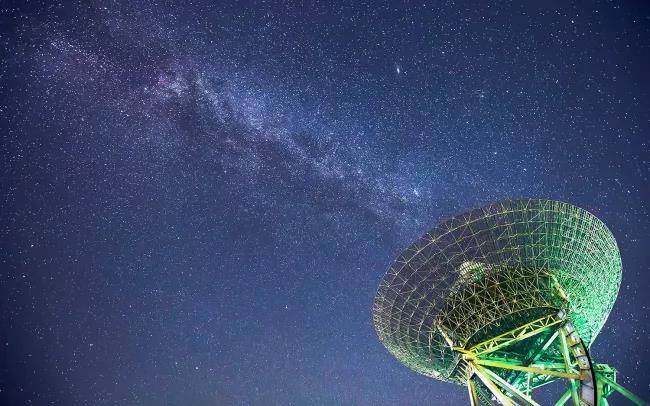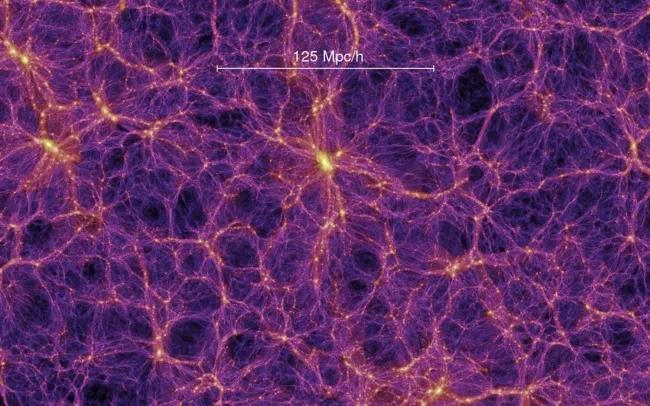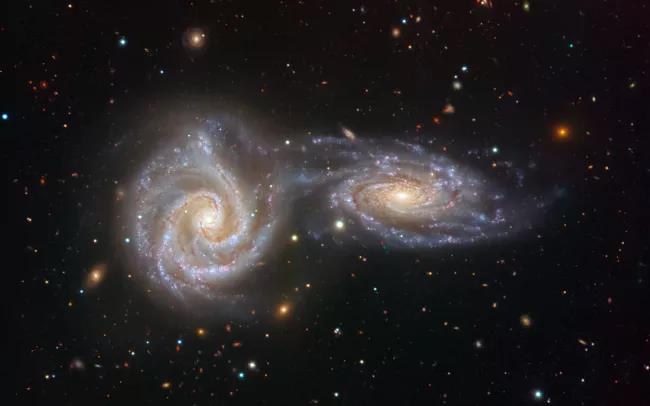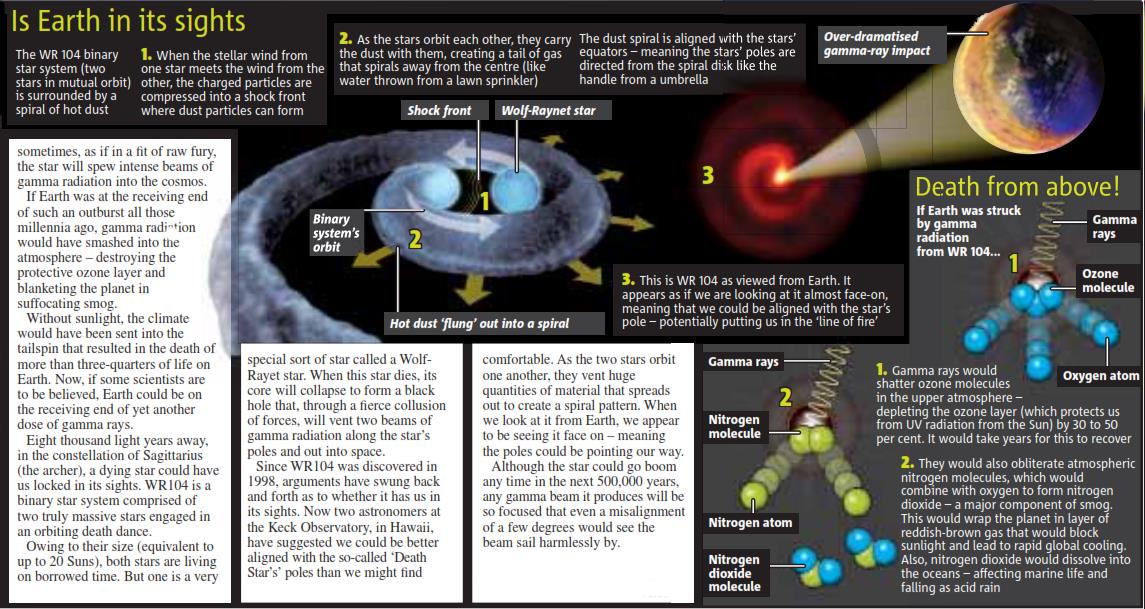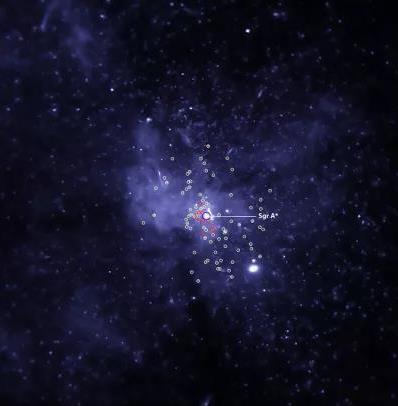The Milky Way (Our Galaxy)
Courtesy: Adam Mann October 16, 2018 - LiveScience
(Image credit: Shutterstock)
On a related note, astronomers are still unsure exactly how much our galaxy weighs, with estimates ranging from 700 billion to 2 trillion times the mass of our sun. Getting a better grasp is no easy task. Most of the Milky Way's mass of perhaps 85 percent - is in the form of dark matter, which gives off no light and so is impossible to directly observe, according to astronomer Ekta Patel of the University of Arizona in Tucson. Her recent study looked at how strongly our galaxy's humongous mass gravitationally tugs on smaller galaxies orbiting it and updated the estimate of the Milky Way's mass to 960 billion times the mass of the sun.
Nobody knows how much the Milky Way weighs
The Milky Way is probably in a big, empty spot in the universe
(Image credit: Springel et al./Virgo Consortium)
Several studies have indicated that the Milky Way and its neighbors are living out in the boonies of the cosmos. From afar, the large-scale structure of the universe looks like a colossal cosmic web, with string-like filaments connecting dense regions separated by enormous, mostly empty voids. The emphasis in that last sentence should be on "mostly empty," since our own galactic abode seems to be an inhabitant of the Keenan, Barger and Cowie (KBC) Void, named after three astronomers who identified it in a 2013 study in The Astrophysical Journal. Last year, a separate team looked at the motion of galaxies in the cosmic web to provide additional confirmation that we're floating in one of the big, empty areas, Live Science previously reported.
Astronomers are trying to photograph the monster black hole at the Milky Way's centre
(Image credit: NASA/CXC/Columbia Univ./C. Hailey et al.)
Lurking in the heart of our galaxy is a hungry behemoth, a gigantic black hole with the weight of 4 million suns. Scientists know that it's there because they can trace the paths of stars in the Milky Way's center and see that they seem to orbit a supermassive object that can't be seen. But in recent years, astronomers have been combining observations from multiple radio telescopes to try and get a glimpse of the environment surrounding the black hole, which is packed with gas and dust spinning around the black hole's maw. The project, called the Event Horizon Telescope, expects to have preliminary images of the black hole's edge in the coming months, according to the team's blog. [Stephen Hawking's Most Far-Out Ideas About Black Holes]
Small galaxies orbit the Milky Way and sometimes crash into it
(Image credit: Juan Carlos Muñoz/ESO)
When Portuguese explorer Ferdinand Magellan sailed through the Southern Hemisphere in the 16th century, he and his crew were among the first Europeans to report on circular clusters of stars in the night sky, according to the European Southern Observatory. These clusters are actually small galaxies that orbit our Milky Way like planets around a star, and they have been named the Small and Large Magellanic clouds. Many such dwarf galaxies orbit ours — and sometimes they get eaten by our massive Milky Way. Earlier this year, astronomers used new data from the Gaia satellite that showed millions of stars in our galaxy moving in similar narrow, "needle-like" orbits, suggesting they all originated from an earlier dwarf galaxy dubbed "the Gaia Sausage," as Live Science reported at the time.
A free template by Lucknowwebs.com for WYSIWYG WebBuilder 8
Galaxies
Copyright © by Nigel G Wilcox · All Rights reserved · E-Mail: ngwilcox100@gmail.com
Main Index
Space Cosmology
Designed by Nigel G Wilcox
Science Research
*
About
Science Research
Science Theories
Desk
Site Map
BookShelf
Powered By AM3L1A
Galaxies
Pages:
Pages within this section:
1
2
3
Sub-Menu
4
5
Galaxies
6
7
8
9


